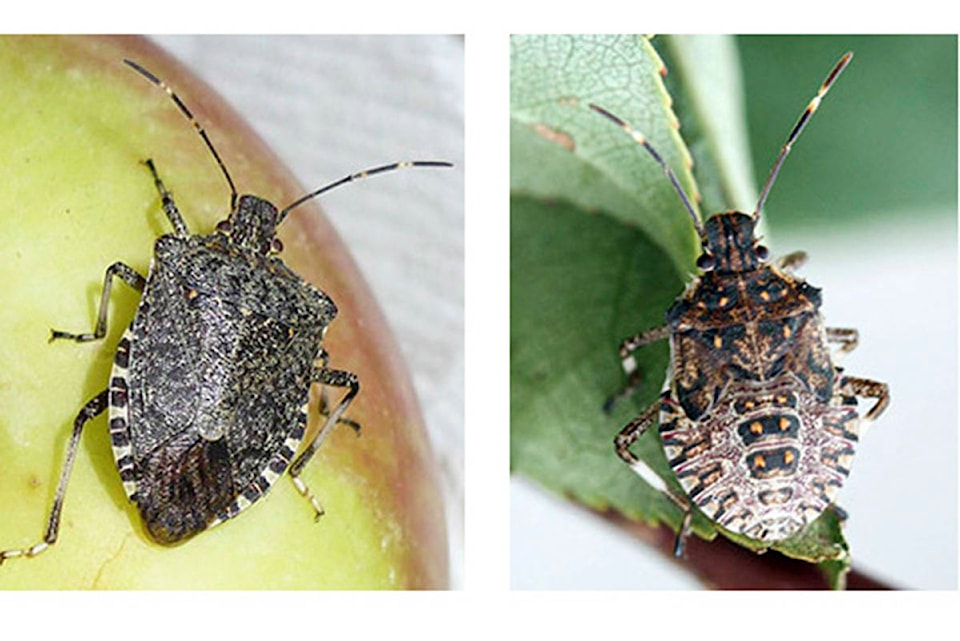This stink bug is a real stinker. But not necessarily for its olfactory effects.
The B.C. Ministry of Agriculture is now in its fifth year of keeping an eye out in Salmon Arm – and other parts of the Interior – for what’s called the brown marmorated stink bug, a pest that can feed on more than 100 different plant species including tree fruits, berries, grapes, vegetables and ornamental plants.
Marmorated is defined as veined or streaked like marble. This particular stink bug can be identified by the distinctive white bands on its antennae.
A poster and trap has been visible recently in bushes near the entrance to Salmon Arm’s city hall underground parking lot.
So far, the agriculture ministry has discovered very few of the pungent critters in Salmon Arm. Just two in 2017 and two in 2019. None in 2020. However, because the ministry is also dependent upon reports from the public, they’d like to know if you’ve seen any.
“They can be confused with native stink bugs… Please report any suspects to the Ministry of Agriculture for correct identification,” said the ministry’s Susanna Acheampong. You can send pictures or samples of suspect stink bugs to her at Susanna.Acheampong@gov.bc.ca. Phone 236-766-7107 or toll free at 1-888-332-3352.
A ministry website notes the stink bug was detected in Penticton and Kelowna for the first time in 2016. In late 2017 it was present at low levels in urban areas of the Fraser Valley and Vancouver, Brentwood Bay on Vancouver Island and the Okanagan Valley. Numbers were high in the downtown Kelowna area. In the United States it has caused tens-of-millions of dollars in crop losses, the ministry stated.
“It’s like looking for a needle in a haystack,” Acheampong added.
She said brown marmorated stink bugs are good hitchhikers and can be transported on vehicles and other items such as shipping containers, wood, packing materials and cargo. They like mountain ash, lilacs and, along with attacking tree fruits, berries, grapes and vegetables, ornamental hosts include tree of heaven, chokecherry, catalpa, boxelder, white ash, maple, English holly and buckthorn.
Predators that feed on the bugs’ eggs include wasps, spiders, ladybugs and lacewings. To get rid of adults, prevent them from entering your home by sealing off access points, and remove them by hand, by sweeping or vacuuming. Insecticides are not recommended.
True to their name, they have a distinctive smell.
“They produce the smelly chemicals as a defence against predators,” Acheampong said. “The smell is pungent and has been compared to cilantro or coriander.”
For more information and photos, go to: https://www2.gov.bc.ca/gov/content/industry/agriculture-seafood/animals-and-crops/plant-health/insects-and-plant-diseases/tree-fruits/brown-marmorated-stink-bug.
Read more: Douglas fir trees in Salmon Arm face attack from bark beetle
Read more: Two B.C. cities crack top 25 most bedbug-infested cities in Canada
martha.wickett@saobserver.net
Like us on Facebook and follow us on Twitter
the wasp.
